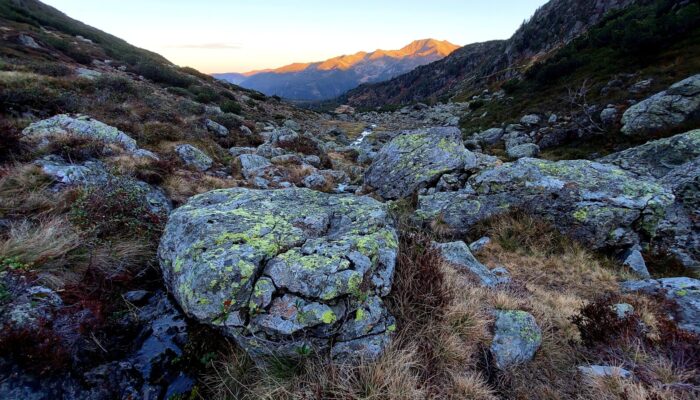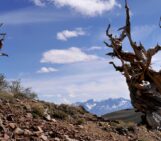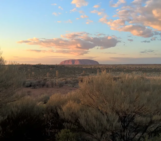
Today, 3 November, is globally recognized as the International Day for Biosphere Reserves. The first edition of this observance day was marked last year, with UNESCO urging our relationship with nature needed “a radical rethink.” As Audrey Azoulay, Director-General of UNESCO explains, “The logic is simple: to improve our relationship with nature, we must first improve our understanding of how we affect the living world that sustains us – and vice versa.”
A good place to understanding biosphere reserves is to first understand the biosphere itself. This “sphere of life” was named by Eduard Suess in 1875 but the concept was more fully described later by Vladimir Vernadsky in the 1920s. The biosphere, as we have come to know since then, is made up of biomes (or biophysical zones), comprising different ecosystems. Each ecosystem is made up of an intricate set of species that have adapted to its prevailing conditions. This includes life forms ranging from microscopic bacteria to the gigantic blue whale.
What are Biosphere Reserves?
Biosphere reserves are large landscapes with significant biodiversity and important ecological systems. UNESCO defines biosphere reserves as “learning places for sustainable development.” They are sites for testing interdisciplinary approaches to managing change and interaction between social and ecological systems, including conflict prevention and management of biodiversity.
Interestingly though, biosphere reserves are not conventional protected areas. They are places where over 275 million people live and work; these reserves exist wherever people interact with nature.
From city to savannah, from mountaintop to mangrove, they range in size from a single, small island community to vast, ecological corridors that stretch across countries.
Today offers us a rare opportunity to celebrate the diversity of these sites: their resilience, the knowledge they generate and the example they set – such as through their support for the green economy or their use of renewable energy sources. Read on for three interesting facts about biosphere reserves.
1) Biosphere reserves must be nominated by national governments
Biosphere Reserves are designated under the intergovernmental Man and the Biosphere (MAB) Programme by the Director-General of UNESCO following the decisions of the MAB International Coordinating Council. Their status is internationally recognized, but they remain under the sovereign jurisdiction of the states where they are located. Member States can submit biosphere reserve sites through this designation process.
New biosphere reserves are designated every year by the MAB Programme’s governing body, the International Co-ordinating Council, which has a rotating elected membership of 34 Member States. Click here to see 20 new sites added to UNESCO’s biodiversity reserves list.
2) The first biosphere reserve connecting five countries lies in Central Europe
Have you heard of the Five-country Biosphere Reserve Mura-Drava-Danube? It encompasses the largest and best-preserved river system in Central Europe, creating a model of international cooperation for river basin management, while also connecting people and nature. It brings together the Lower Mura Valley Biosphere Reserve (Austria), the Mura-Drava-Danube Transboundary Biosphere Reserve (Croatia and Hungary), the Bačko Podunavlje Biosphere Reserve (Serbia) and the Mura River Biosphere Reserve (Slovenia).
Home to about 900,000 people (as of 2021), this unique river system provides essential ecosystem services and is essential for the survival of characteristic habitats and species. Local businesses here mainly focus mainly on agriculture, fishing, forestry, renewable energy, mobility, gravel and sand extraction and tourism.
3) The “World Network of Biosphere Reserves” is vast and ever changing
The World Network of Biosphere Reserves is a dynamic and interactive network of sites of excellence. It promotes North-South, South-South and South-North-South collaboration and represents a unique tool for international cooperation. The Network fosters harmonious integration of people and nature for sustainable development through participatory dialogue; knowledge sharing; poverty reduction and human well-being improvements; respect for cultural values and society’s ability to cope with change – and in doing so, contributes to the 2030 Agenda and the Sustainable Development Goals (SDGs).
As of today, there are 748 biosphere reserves in 134 countries, including 23 trans-boundary sites. They are distributed as follows:
- 93 sites in 33 countries in Africa
- 36 sites in 14 countries in the Arab States
- 176 sites in 24 countries in Asia and the Pacific
- 309 sites in 41 countries in Europe and North America
- 134 sites in 22 countries Latin America and the Caribbean.
Some say that biosphere reserves are ‘science for sustainability support sites’, but regardless of what you call them, their role in sustaining life cannot be understated. How many biosphere reserves can you think of, and do you know the ones that exist in your country? If you have any facts or information you’d like to share about them, let us know in the comments below!



